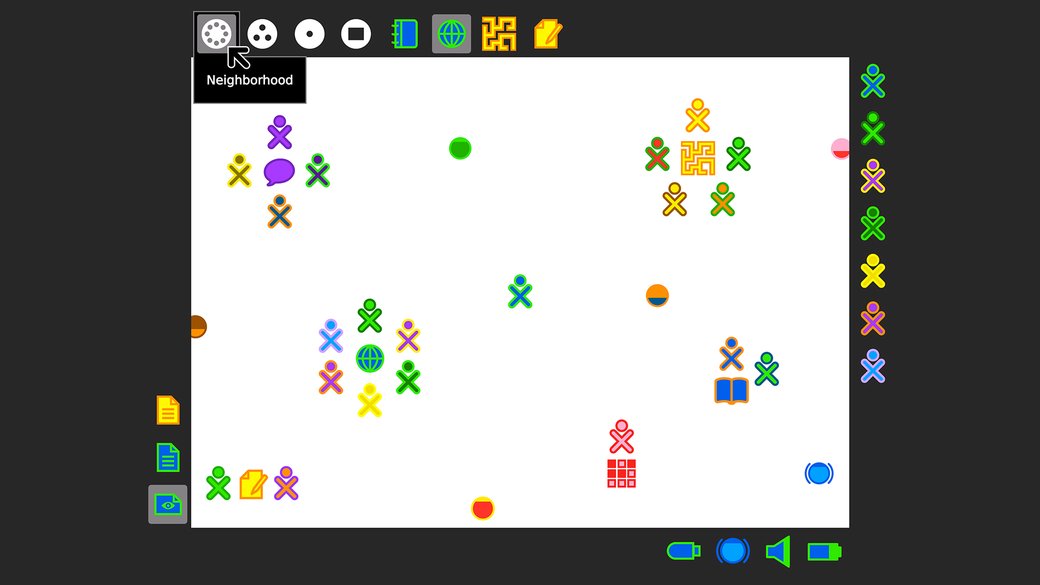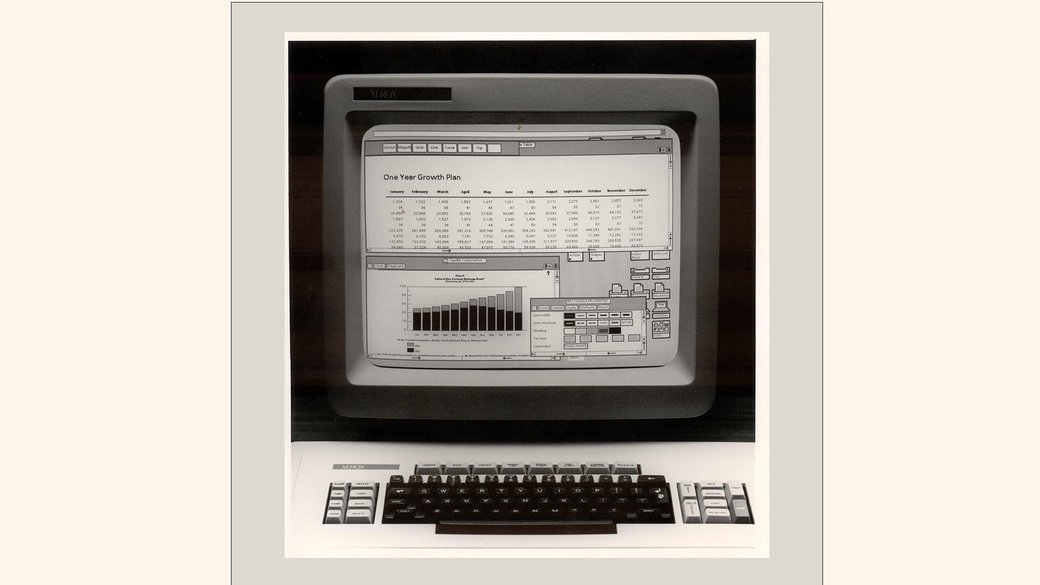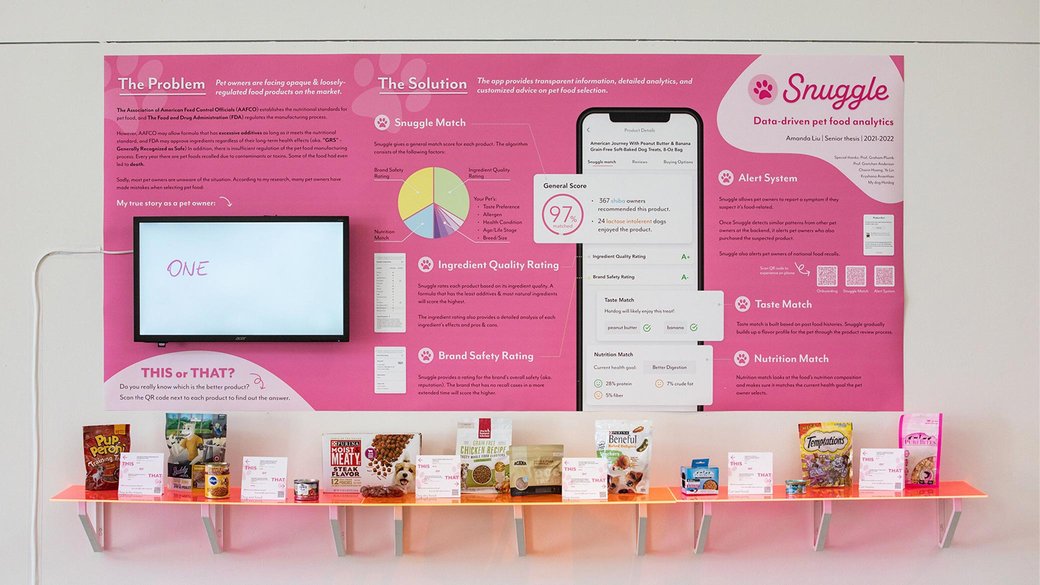Mapping the untold stories of pioneering women in interaction design
Who are the women who have shaped the history of computing and interaction design? We talked with Chair and Associate Professor of Interaction Design Erin Malone to learn about her project to include the fascinating stories of trailblazing women in a field that touches everyday life.
Interaction design harnesses the power of technology to reshape life itself, in industries from gaming to consumer products to health care. Erin Malone, chair and associate professor of Interaction Design at CCA, has seen this field evolve over the course of her incredible career. With over 25 years leading experience design teams, she is well suited to teach the next generation of students inventing the future of interaction design and continuing to define this ever evolving field of how we play and work—with no limits to what can be done.
With Erin’s extensive insider perspective of the history of interaction design, she has decided to ask a critical question of society: Why is the history of this industry focused almost entirely on white men? Where are the stories of women and women of color?

Sugar UI for One Laptop Per Child project showing the Neighborhoods screen. This design work, by Lisa Strausfeld, won the Cooper Hewitt Interaction Design award in 2010. Screen courtesy of Sugarlabs.org.
Erin is shining a bright light on the untold history of interaction design. Challenging the status quo with stories of early interaction and information pioneers, she is currently writing a book entitled In Through the Side Door: Fifty Years of Women in Interaction Design. Her book will reveal the women who were innovators in this male dominated area. These are the women who created new practices and methods, and started programs in universities. They ran departments in tech companies, and founded agencies and startups.
We sat down with Erin to find out how her book will reexamine history and what it means to work in interaction design today.
Where did the idea for Fifty Years of Women of Interaction Design come from?
I was getting ready to teach a Design History survey course in 2020. I wanted to showcase the women who have made contributions to the field. I asked students to seek and find overlooked, under-appreciated or emerging leaders. Soon, it became quite clear that there was no single source that held the stories of these founding women, and those that followed in their footsteps, carving out their own paths.
I continue to poke holes and probe with a series of questions: Where are the stories of the women who created the origins of computing? Where are the faces and lives dedicated to the dimensions that rose from this field? What about the female voices in information architecture, content strategy and governance, systems thinking, data visualization, visual UI design and straight interaction design?
You have noted that the names you might typically find of women in this field are Ada Lovelace, Grace Hopper, and Brenda Laurel. How will you shift this narrative and widen our lens?
I will uncover the stories not yet told. What I am finding is that there is a tremendous amount of information that has not been in the public realm. It is particularly striking because this is an industry that dominates so many aspects of our lives. Interaction design is about the relationship between a person and technology, and the interactions that occur between those two factors. What is the nature of that relationship? Does it involve a mouse, gestures, or touch? This is not at all about the design of physical devices as that is related to the field of industrial design. This field is entirely screen or digital based.

The Xerox Star system with original desktop metaphor of overlapping windows and direct manipulation of items indicated with icons, c. 1981. Image courtesy DigiBarn Computer Museum.
How are you approaching this giant body of research you are undertaking?
I am looking to uncover women’s stories to create an accurate, historical, and fully inclusive timeline. Initially, I collected names of women from the community. And as the work developed, expanded cultural context was added in addition to an exploration of the work alongside waves of feminism. I started with the design of the graphical user interface with Xerox in the seventies and then explored Apple in the eighties. There are four waves of feminism, with an endpoint in 2012, composing the structure of my book: 1960s–1980s earliest pioneers; 1980–1993 personal computing; 1993–2005 the internet changes everything; and 2005–2012 the rise of web 2.0.
The role of women sounds like it has all but been erased. You are making the invisible visible. How do you think we got here?
Women are collaborative and often don’t want to take credit for a team effort. The challenge here is that interaction design is just one part of the efforts that harness multiple engineers, designers, and product people to design and deliver a piece of software. Whether the interaction design is mobile or desktop based, it takes a village. Dozens of people make it happen.
Women don’t tend to take credit, but men sure do! Men are more self promotional. A woman will often say that she didn’t do it all by herself, prioritizing developing the community aspect. There are firm stats to back this fact up. This is a major factor in why women get promoted to middle management and get stuck there. They don’t make it to the leadership roles. But men who brag do make it to the top. Women stick to mentoring, creating community and culture within middle management. This plays a big part of why women are invisible.
Interaction design is aptly named as it is all about interactions. What does it mean for students who might be inspired by this work and want to pursue a college career?
Interaction design is called that intentionally. It is all about the interaction itself. The work is about relationships between a person and software. There are very few undergraduate interaction design programs other than CCA in this country. Most are solely graduate level. CCA students are immersed in general studies their first year, and then take a deep dive into methodologies the following year. These students are in high demand. They are snapped up by organizations such as NASA, Facebook, Amazon, Apple, Microsoft and Salesforce upon graduation for their highly valued skill set.

BFA Interaction Design end-of-year exhibition, 2022.
For those of us new to the concepts in interaction design, is it correct to say that an example of such interaction is when we tap a button on an app and then pause to think for a second on what to tap next?
Yes! It is that, and so much more. What feedback do I get? How does that fit into a suite of software? It is based on behavior. Software gives cues to say that you are on the wrong track, or the right one. Who are we designing for? What are we trying to accomplish? Is it playful, serious, or work related? What is the design of interactive flow that supports a need like getting on Zoom? Do you feel in control on each step of the way and does the software back that up?
So, interaction design is everywhere in the world we touch. And yet, women up until now have been all but invisible to a large part of its history. What can we do to help shift the narrative?
With an eye to forging inclusive and nurturing environments, we must celebrate the people who make the work. A woman who is strong does not mean a woman is aggressive or bossy. We can model best practices at work, and call out negative behavior, rather than accept it and look the other way. We need to do better, and I know we can do better! It starts with making sure that these stories will be told.
Keep your eye out for Erin’s upcoming book In Through the Side Door: Fifty Years of Women in Interaction Design from MIT Press next year.
Published on July 18, 2023